Following the Milkweed
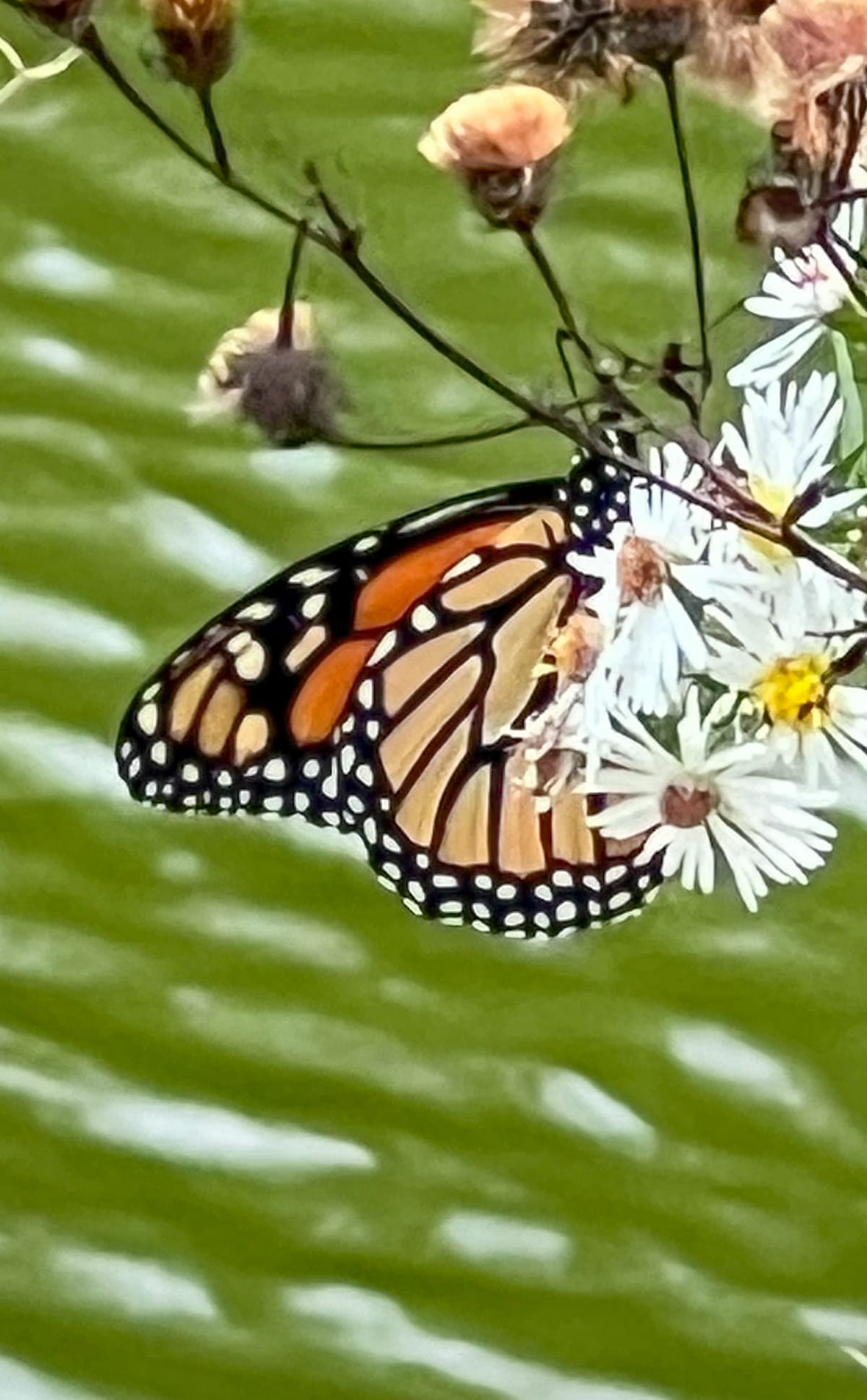
I was surprised to spot a Monarch at the park in early October. It was the first time I spotted one this late in the year, (it's not unprecedented except for me).
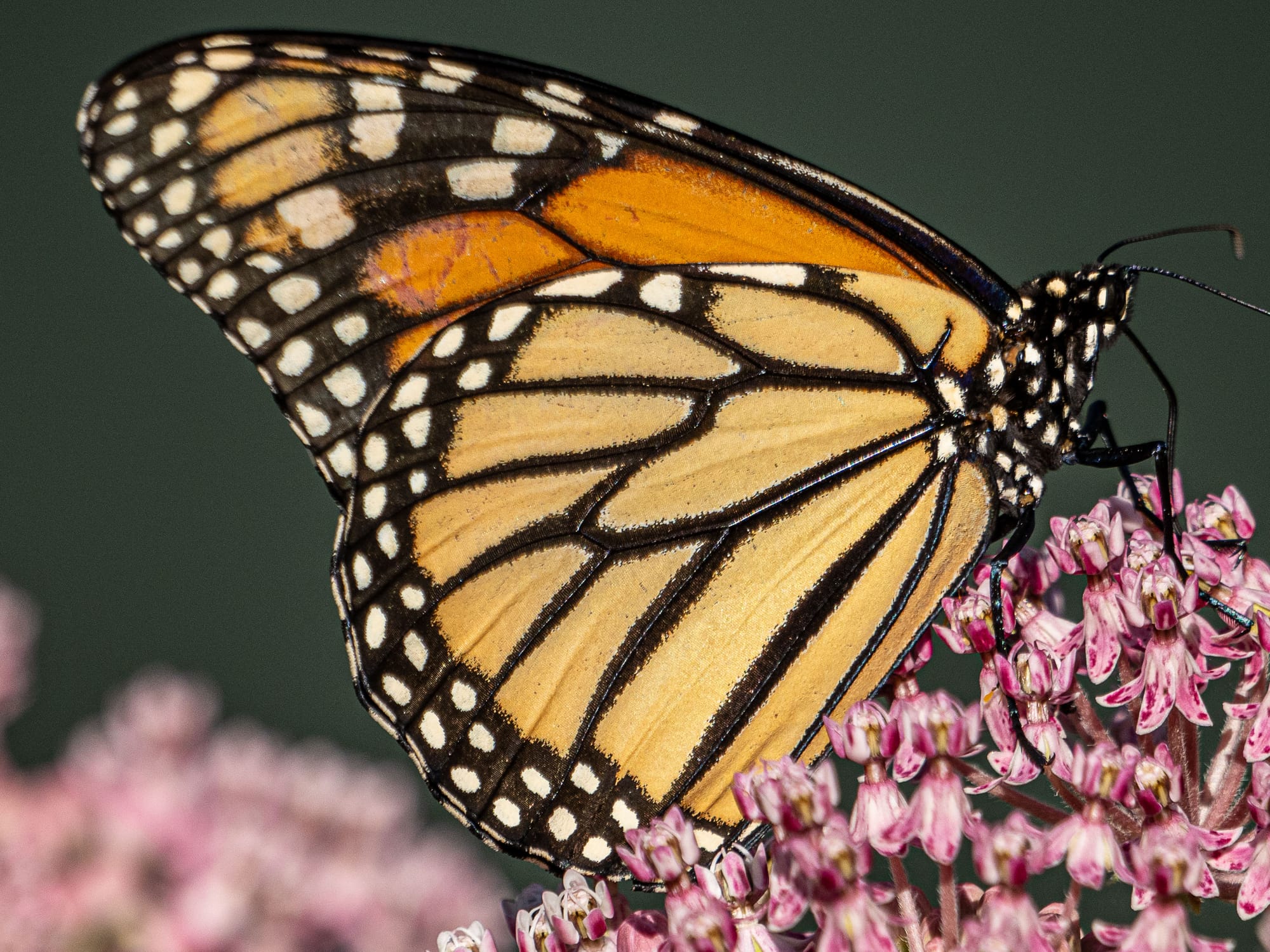
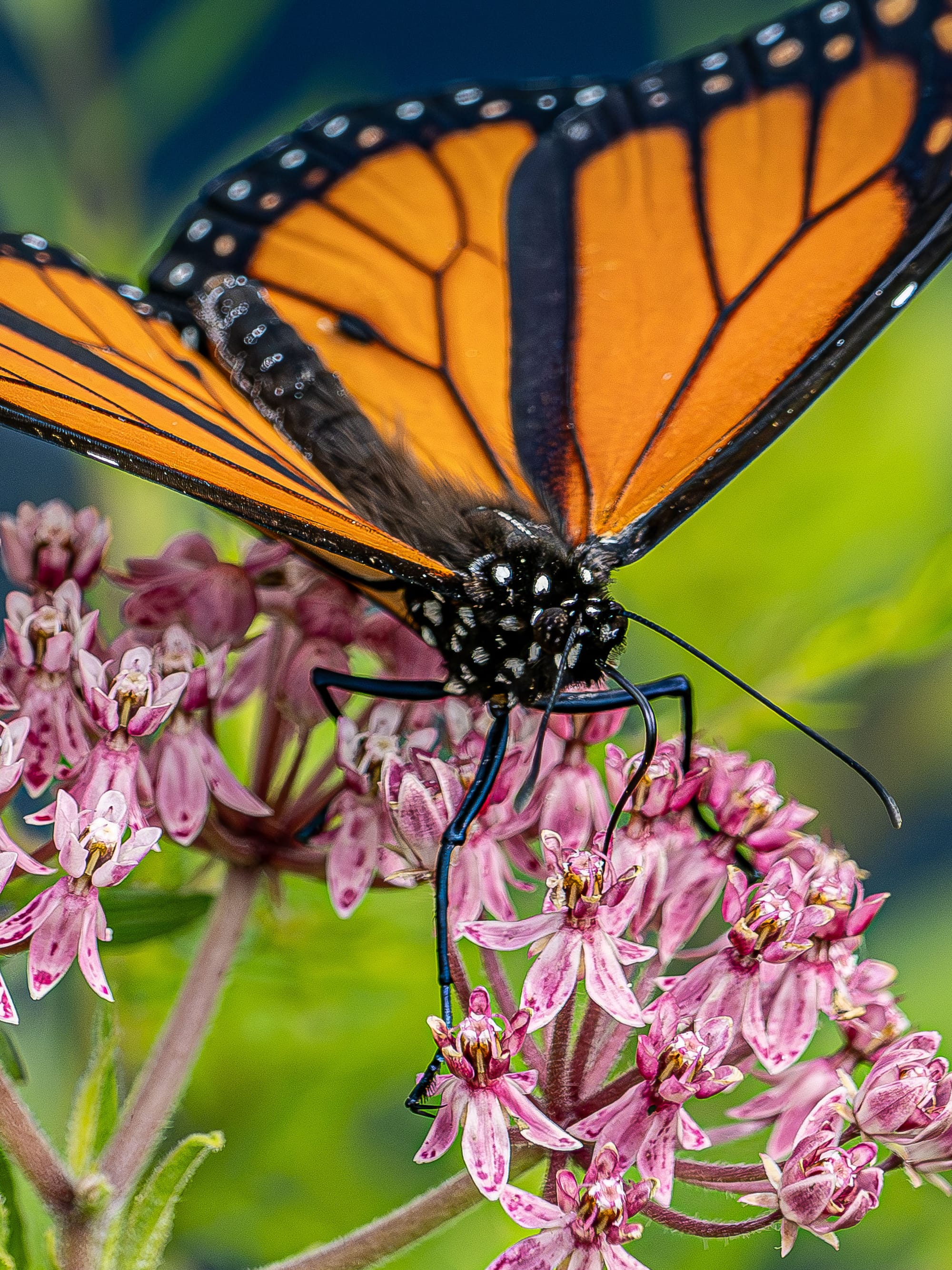
Monarch nectaring on milkweed flowers.
The monarch’s migration is famously the longest and most complex of any North American butterfly. At Nixon Park, they usually appear in late April or early May, depending on spring weather and the growth of milkweed—the plant to which their entire life cycle is bound. The park is a seasonal way station, a brief stopover for northbound monarchs to feed, mate, and lay eggs on the underside of young milkweed leaves before continuing their journey.
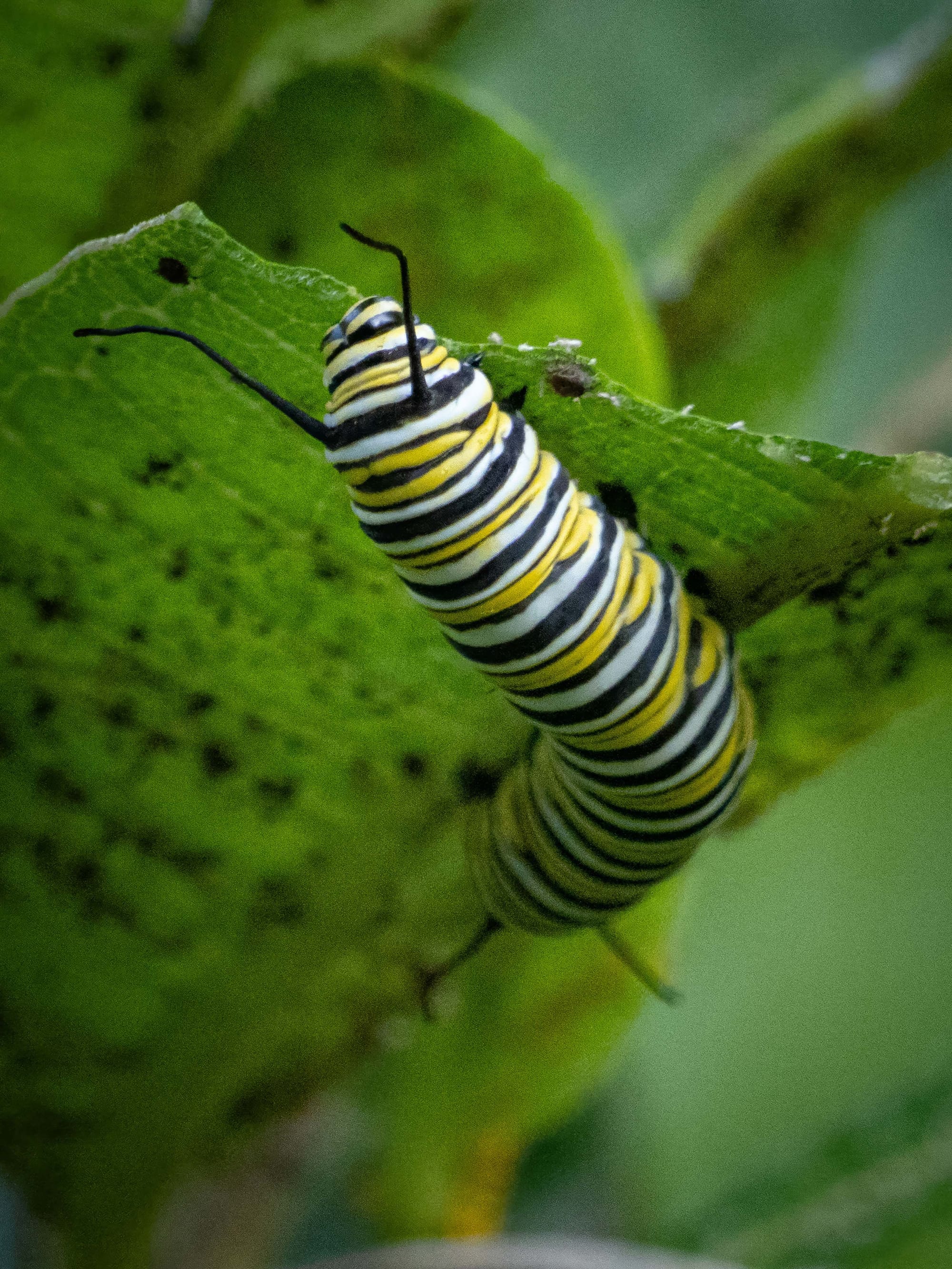
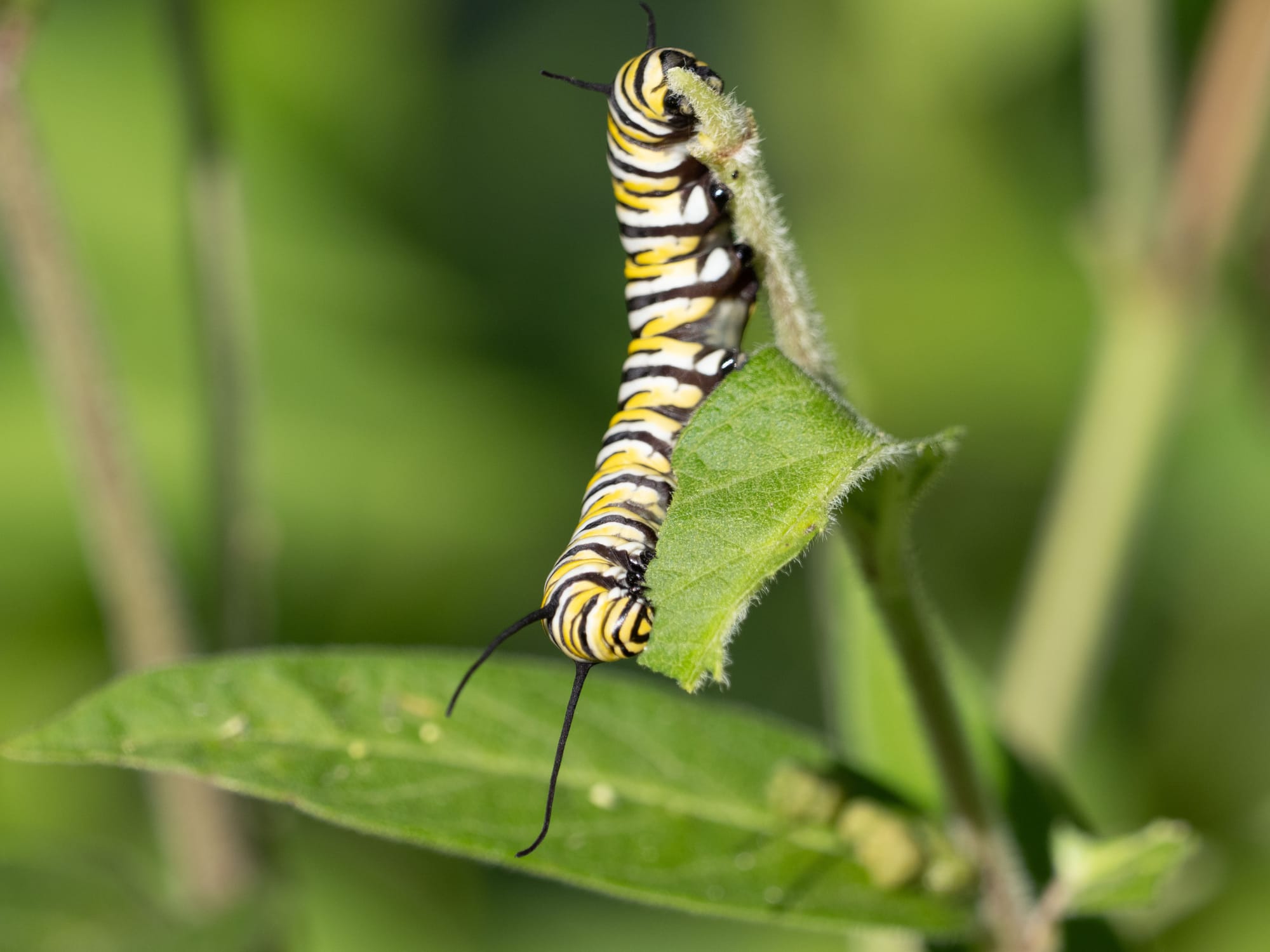
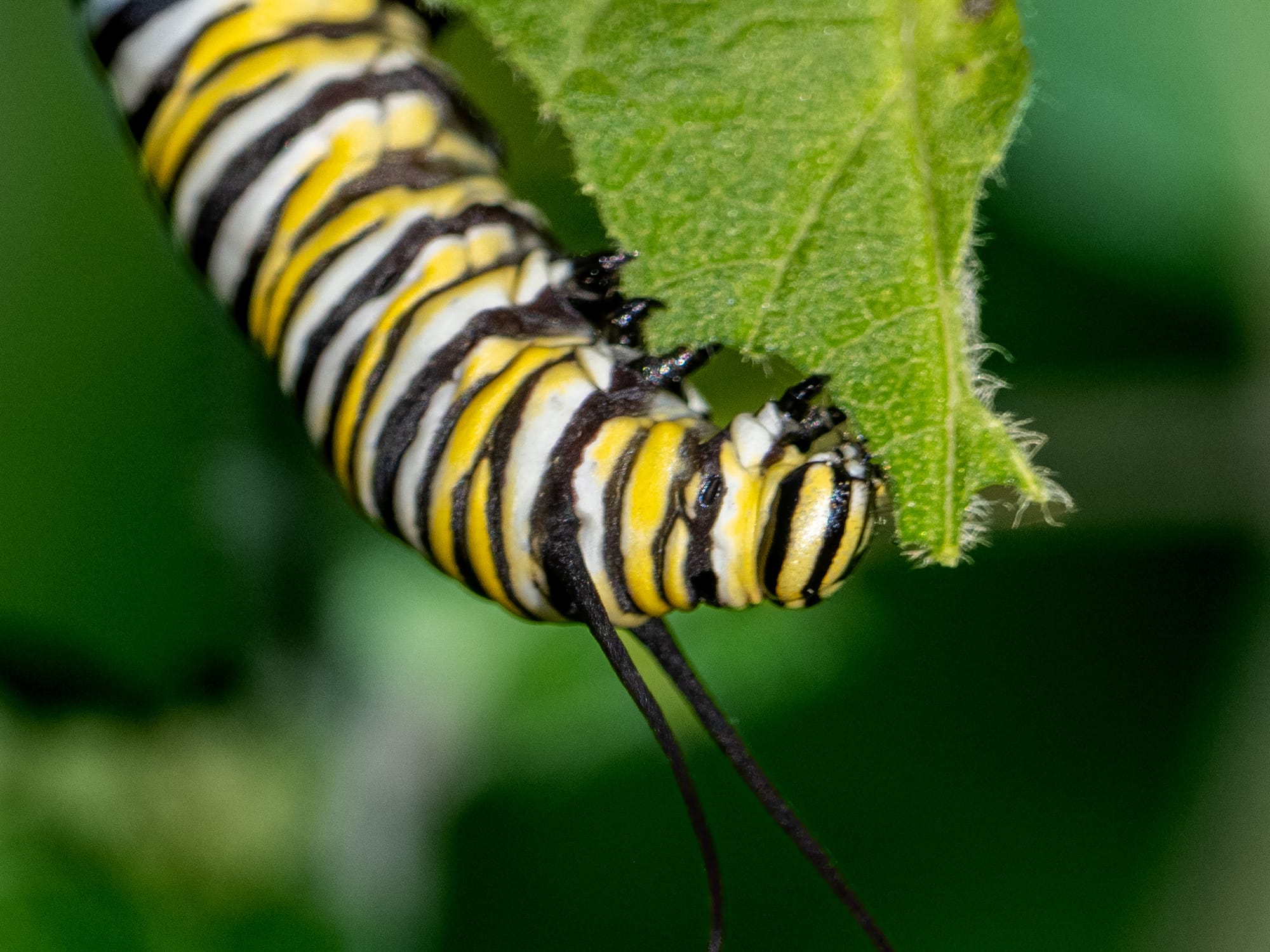
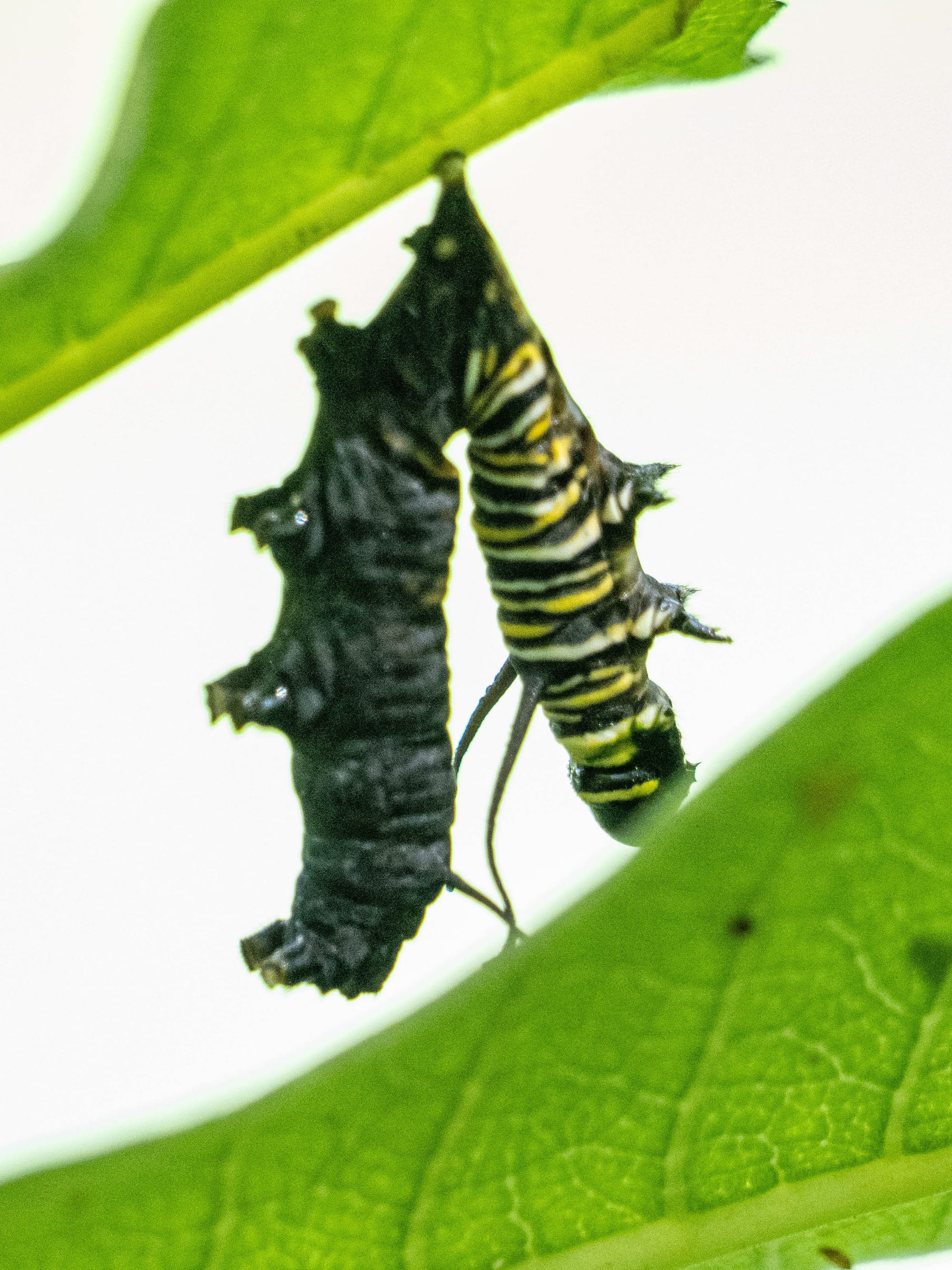
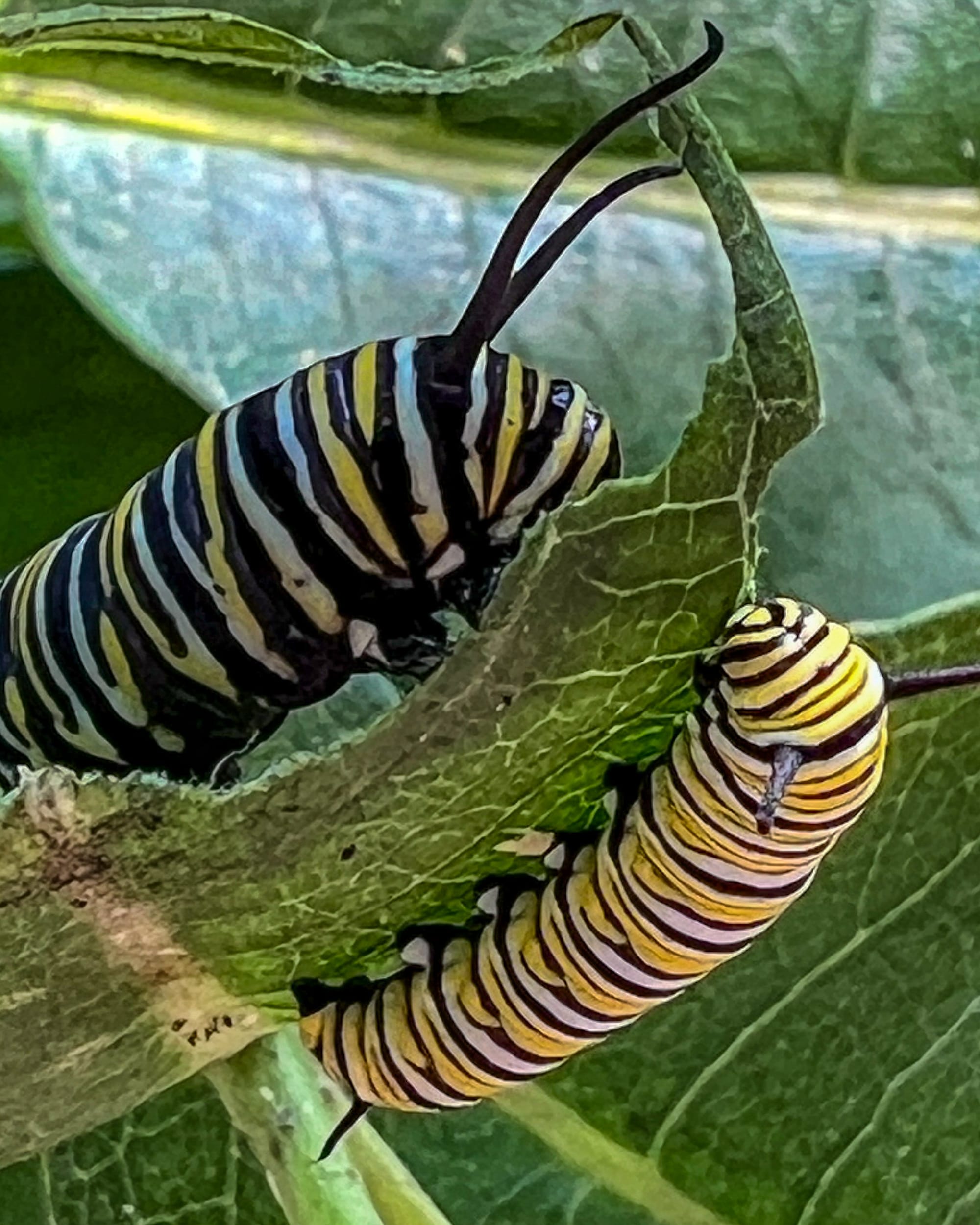
Monarch caterpillars feed exclusively on milkweed leaves. A molting caterpillar, and a comparison of two stages of caterpillar growth.
In three to five days the first stage of the monarch caterpillar emerges and feeds exclusively on milkweed. They grow quickly, molting five times over ten to fourteen days before forming a smooth green chrysalis. Adult Monarchs emerge in another ten to fourteen days.
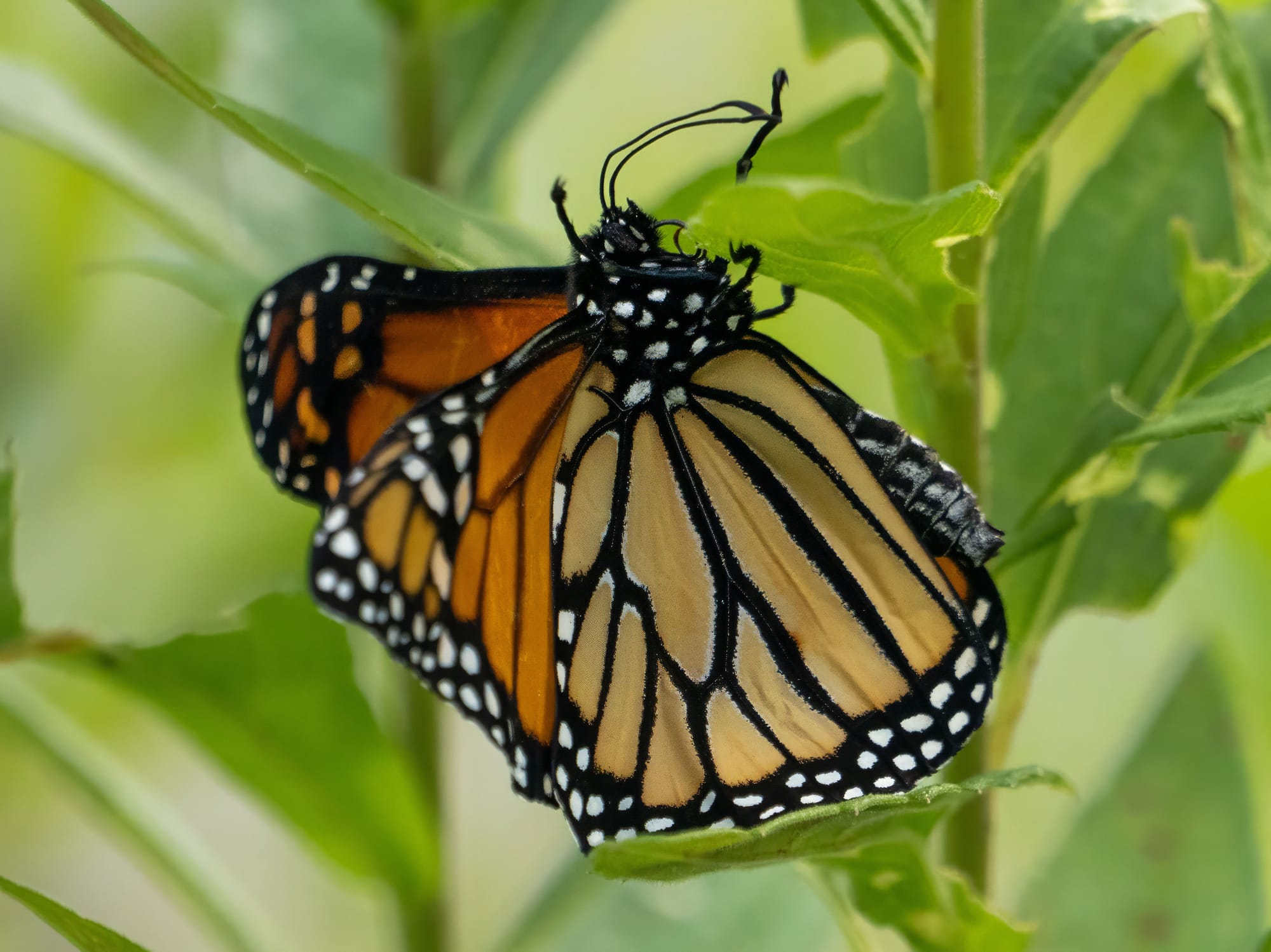
Fewer than 5–10% of monarch eggs survive to adulthood. Predatory insects consume eggs and small caterpillars. Wasps feed larger caterpillars to their larvae. Some flies parasitize caterpillars. Adult monarchs are preyed upon by mantises waiting in ambush on flowers.
Most birds learn to avoid monarchs after experiencing a reaction caused by the cardiac glycosides (which disrupt vertebrate heart function) Monarchs ingest from milkweed. Blue jays are among the few birds known to tolerate Monarch toxins, sometimes eating only less toxic parts.
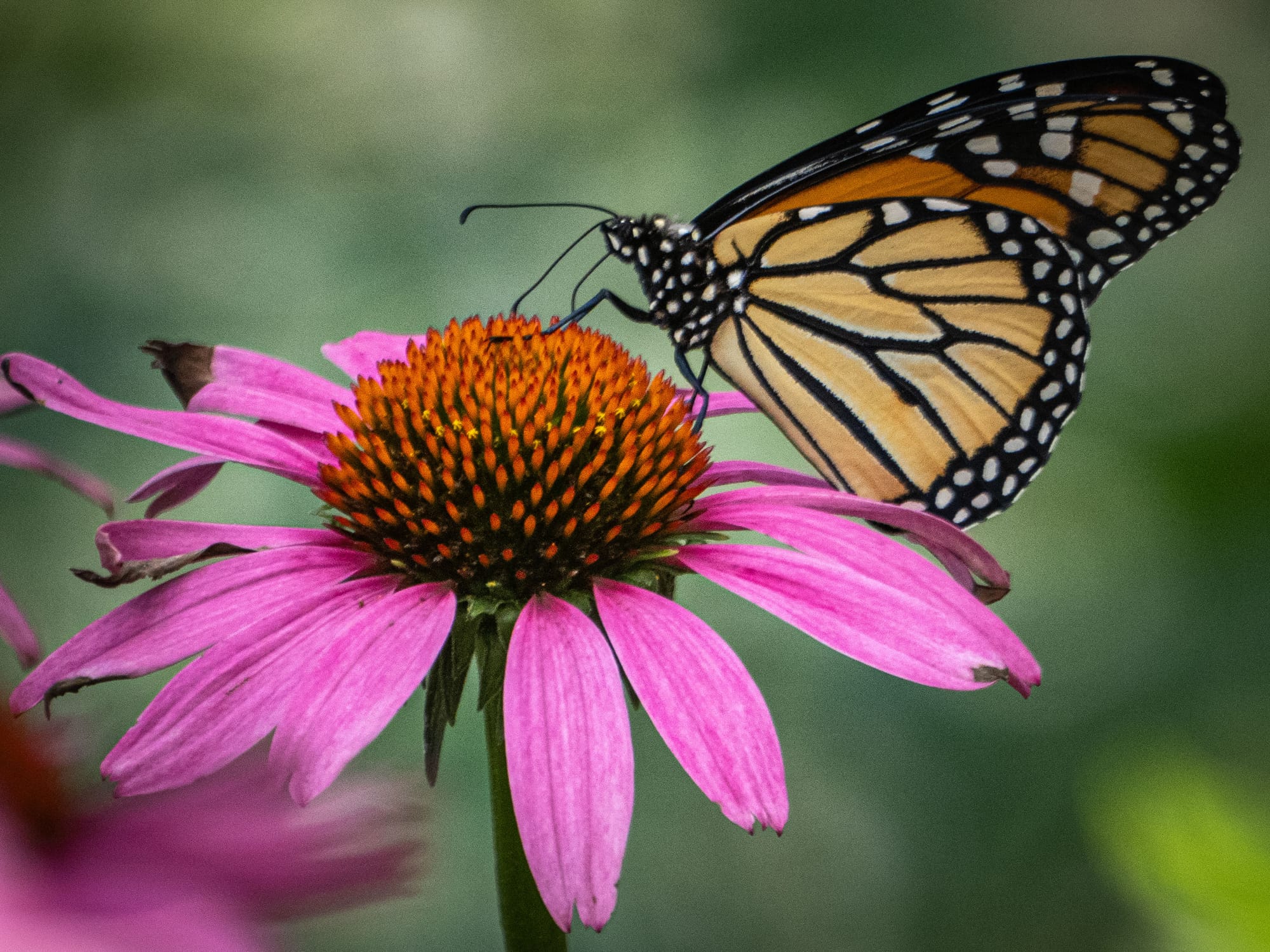
Monarchs emerging during late August's shorter days, cooler nights, enter reproductive diapause (a pause in sexual maturity). These late summer butterflies are known as Migratory Monarchs. Instead of using energy for breeding they store fat to fuel their long flight to Mexico. This delay means Migratory Monarchs live 6 to 9 months, (much longer than summer butterflies).
Migratory Monarchs are not the individuals that return in the spring. When they leave Mexico and begin migrating north they breed along the way, and then die. Their descendants, several generations later, return the next year. Each migration is a multi-generation relay, not a round trip by the same individuals.
Southward migration through Chester County peaks in early to mid-September, most monarchs are gone by mid-October.
The 2000 mile migration from Chester County to Mexico takes about 6 to 8 weeks. They fly 25–50 miles per day depending on weather, wind, and nectar availability. They roost at night to rest and continue when the sun rises, feeding along the way.
Several orientation mechanisms keep Monarchs on course. On fair days they detect the sun’s position for visually, but on cloudy days blue and ultraviolet light activates molecules in their abdomen providing a magnetic compass. These mechanisms make it possible for Monarchs to migrate along pathways they have never travelled before. They keep track of the time of day with a chemical clock in their antennae that stays synchronized by sensing sunlight. Their vision is simple but allows them to detect large visual contrasts, such as dark ridges and bright rivers, which help them stay oriented.
The migration flight is mostly just a few dozen feet above the ground so they can easily find nectar sources and roosting sites.
When conditions are favorable they may fly much higher. Radar has recorded monarchs at altitudes ranging from 400–5,000 feet using thermal air currents or tailwinds to glide long distances efficiently.
The migratory Monarchs begin their return north in late February or early March synchronized with milkweed growth in northern Mexico and the southern United States. They are finally able to reproduce and the next generation continues north as the milkweed there begins to grow. Several generations advance only as far as new milkweed growth allows. By late spring and early summer, Monarchs reach Chester County.
Monarch migration probably began after the last Ice Age, (around 10,000 years ago) as milkweed spread northward and monarchs adapted to seasonal climates by evolving long-distance migration.
Exactly where migrating Monarchs were headed remained unknown until Canadian zoologist Fred Urquhart and his wife Norah organized large-scale tagging projects with the help of thousands of volunteers. In 1975, Kenneth Brugger and Catalina Trail discovered the first overwintering colonies in the mountains of Michoacán, solving the long-standing mystery.
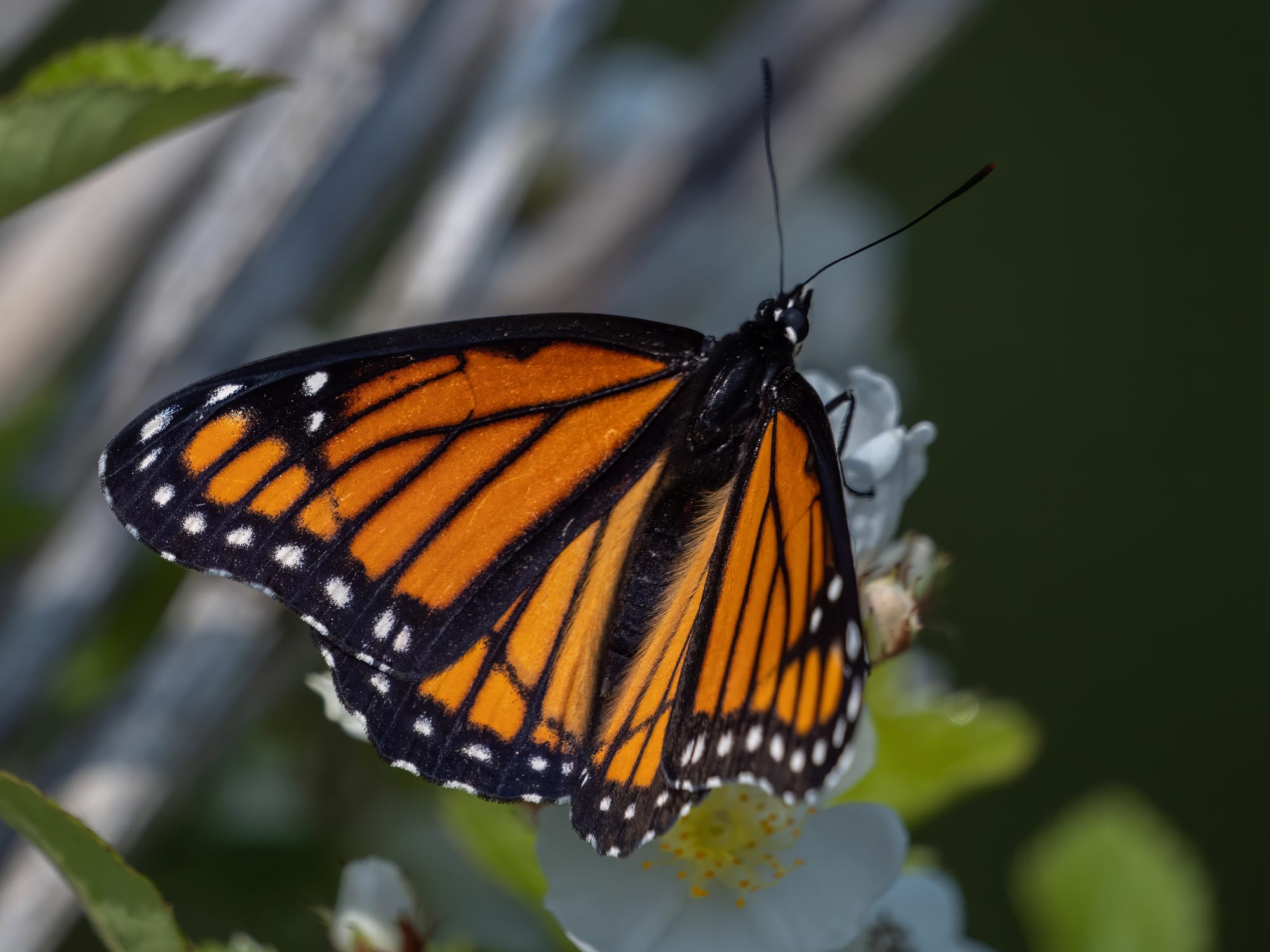
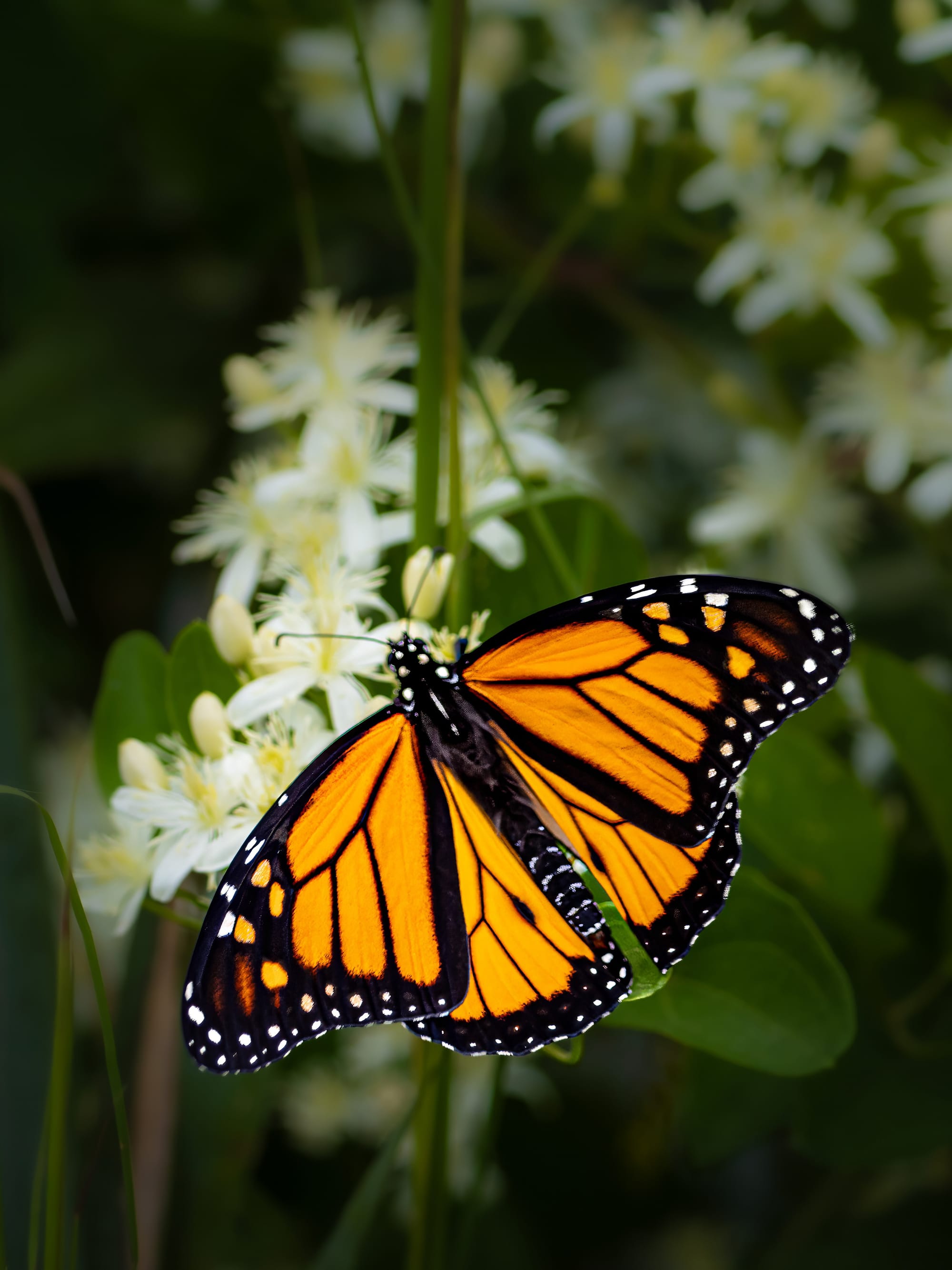
The first picture is a Viceroy, note the black lines that cross the hindwing, not present on the Monarch in the second picture.
I've also spotted a few Viceroy butterflies at the park. They closely resemble monarchs, an example of Müllerian mimicry, where two species that are equally distasteful to predators evolve similar warning patterns. Monarchs obtain their defensive chemicals from milkweed, while viceroys rely on bitter compounds from willow and poplar trees. Both benefit from sharing a warning pattern because predators learn to avoid both if they have an unpleasant encounter with one.
While we are in the depths of winter the monarchs are gathered in dense clusters on Mexican fir trees, while Viceroys remain dormant locally as caterpillars rolled up in leaves.
Next spring the descendants of this year's Monarchs return northward to complete a pattern that unfolds each year in the meadows and woodlands of Nixon Park.




